7+ SAMPLE Business Emergency Action Plan
-
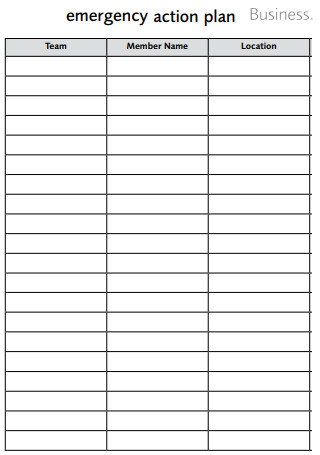
Business Emergency Action Plan
download now -
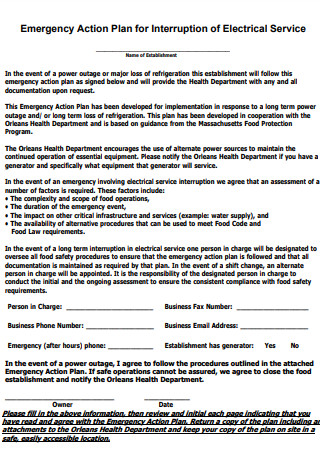
Restaurant Emergency Action Plan
download now -
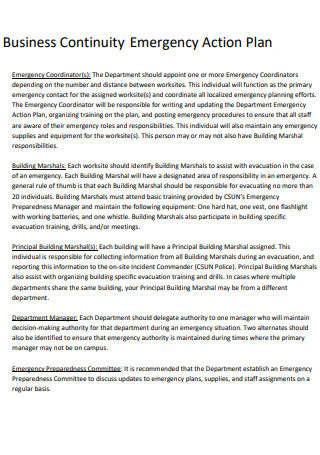
Business Continuity Emergency Action Plan
download now -

Retail Food Emergency Action Plan
download now -
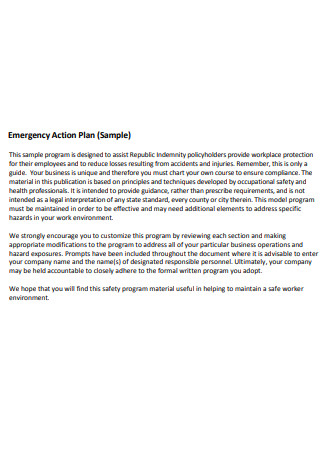
Sample Business Emergency Action Plan
download now -
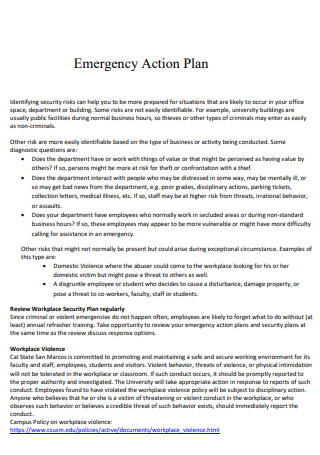
Simple Business Emergency Action Plan
download now -
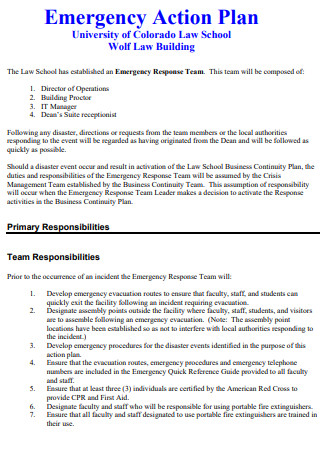
Law School Business Emergency Action Plan
download now -
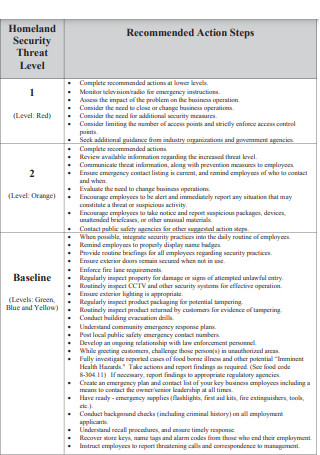
General Business Emergency Action Plan
download now
FREE Business Emergency Action Plan s to Download
7+ SAMPLE Business Emergency Action Plan
What Is A Business Emergency Action Plan?
Elements That Can Be Found In A Business Emergency Action Plan
Common Factors That Impact A Business
Step By Step Process In Creating An Effective Business Emergency Action Plan
FAQs
Should you alert the authorities to any kind of emergency?
During an emergency, should you stay in place, or should you evacuate outside?
What are the categories of workplace emergencies?
What Is A Business Emergency Action Plan?
Before we get to know what a business emergency action plan is, we should be familiarized first about what an emergency action plan is. Simply put, an emergency action plan refers to a business document that tells the employees of a company what to do and how to act in the event of a workplace emergency. This document should be written in accordance with the standards set by the Occupational Safety and Health Administration (OSHA).
A Business Emergency Action Plan is a document that establishes a precise organizational structure for responding to business emergencies. It also gives roles and responsibilities to the employees for carrying out the plan in the event of an emergency. A properly-developed business emergency action plan, as well as thorough emergency training of the personnel (to ensure that they understand their various roles and duties in the action plan), are required for it to function efficiently.
Elements That Can Be Found In A Business Emergency Action Plan
The contents or elements of a business emergency action plan are unique to the type of business that an individual or a company is running. Nevertheless, some common elements still exist, which are the following:
Common Factors That Impact A Business
Here are the most common unwanted events or factors that can negatively impact the way a business is operating:
Step By Step Process In Creating An Effective Business Emergency Action Plan
Developing a business emergency action plan can prove to be difficult since there are a variety of disasters and emergencies that a business can possibly face and creating a plan covering all possibilities will be very much impossible. An effective business emergency action plan can serve as an essential emergency tool in case an emergency does occur in the business. Here are the steps in creating an effective one:
Step 1. Develop the Outline and Guidelines for the Business Emergency Action Plan
Before you can start writing an emergency action plan, you must first gather your company’s objectives and rules for the plan, At a high level, the purpose of the plan will be to minimize the impact of the disaster or the emergency on your business, protect your employees, assets, and operations, and get back to business as soon as it is possible to do so. However, there are also some specific needs for your plan that you need to think about as well. These characteristics or needs are specific to the business that you’re operating and the requirements that are mandated by the local and federal regulations.
Step 2. Assess the Risks and Threats to Your Business
The next step to do would be to assess the hazards and risks to your business once you have a better understanding of the federal, local, and business-specific standards that will play a part in the construction of your disaster preparedness plan. Of course, it will be very hard to identify and plan for all types of risks and hazards; however, by identifying the ones that are most likely to have an influence on your business, you can end up creating a more effective and relevant procedure. In assessing the threats, you can start by preparing about the most common scenarios that pose a major risk such as fires, floods, earthquakes, and other natural disasters. You should also consider other threats that can prove to be less obvious such as active shooters and security incidents.
Generally speaking, you should prepare for risks that are more unique to the business that you are running. For example, a chemical plant should plan for threats of contamination or injuries due to the equipment.
Step 3. Conduct an Impact Analysis of Your Business
The business impact study or analysis that you will conduct will attempt to predict the effects of business disruption that is caused by an emergency or a disaster, which will aid in the development of an effective recovery strategy for your business. To reiterate, it is pretty much impossible to exactly predict down to the tiniest action how a potential emergency or a disaster will affect the business that you currently run. One thing you can do, however, is to take whatever you’ve learned from the assessments you’ve performed to determine what disasters or emergencies are most likely to affect your business and what the effect looks like.
Step 4. Write the Business Emergency Action Plan
After completing the lengthy process of planning, you already have an idea of the potential risks that your business can face as well as their impact. You should also have enough information on what the plan should include. So now is the time to actually start writing the business emergency action plan. Since creating this document will involve collaborating with other company leaders, the HR department of your business, and local/governmental resources, it will be a time-consuming task. The elements of the action plan are listed earlier in this article.
The overall goal that you should set in creating the emergency action plan should be that it is clear, actionable, and well-organized. The action plan should provide as much detail as possible, while also allowing the appropriate personnel to quickly access all the information that they need in any given scenario.
Step 5. Perform a Review and Test the Plan
The process is not completely finished yet after you’ve written your business emergency action plan. After writing, go over the plan with your business leaders and put it to the test. You can schedule a business meeting to talk about emergency preparedness, walk through the plan with corporate executives, get feedback, and discuss it. After you’ve taken this step, you can have a more hands-on approach by conducting drills, tests, and seeing how your business performs in planned scenarios. You can also use this time to introduce the plan to your employees, begin the training process, and seek feedback on how the plan is working and what can be improved.
Step 6. Identify Areas of Improvement and Refine Your Plan
You should be able to identify the areas in which your business emergency action plan can be improved as a result of the meeting you conducted with the business executives. Also, at this stage, you should figure out the ways on how to tweak the strategy to address the areas of improvement and fine-tune the document that you have created. It is also critical to remember that your business emergency action plan should be a document that is constantly evolving. The emergency and disaster action plan will most likely change as the company grows and changes. As a result, you’ll want to thoroughly train your team after the document has been created and you’ll also want to make sure that updates are constantly provided as the procedures constantly change.
FAQs
Should you alert the authorities to any kind of emergency?
In most scenarios, workplace emergencies can necessitate having to call the appropriate authorities, such as the fire and rescue department, emergency medical services, or the police department. It is also important to designate someone in the workplace to make the call to the authorities should an emergency arise. With that being said, an effective emergency action plan must also list all the emergency numbers from external help so they can easily be contacted whenever they are needed.
During an emergency, should you stay in place, or should you evacuate outside?
In most emergencies, evacuation from the site is the most ideal action that you can take. However, there are certain emergencies such as chemical, biological, or radiological contamination that would require all personnel to stay indoors since this is considered a safer option compared to totally evacuating the building. This option of handling emergencies is called a shelter-in-place option. When selecting a room that should be used as a shelter-in-place option, make sure that the room has little to no windows and has adequate space for every person who works in that company.
What are the categories of workplace emergencies?
Here are the three categories of workplace emergencies which can affect your company’s business operations:
Emergencies Outside the Building – this refers to weather-related emergencies and natural disasters, such as typhoons, earthquakes, tornadoes, and hailstorms. These kinds of events have varying levels of warning and danger, so it is important that all workers know how to deal with them.
Emergencies Within the Building – this refers to emergencies that occur inside the workplace, such as power outages, fires, or an active shooter or criminal in the building. The main goal of dealing with this emergency is to get everyone out safely. Having a good knowledge of the workplace and the evacuation routes is essential for the staff to anticipate any unforeseen detours during evacuation.
Health Emergencies – this refers to emergencies that are related to someone’s health, such as heart attacks, seizures, getting injured in the workplace, broken bones, etc. Depending on the severity of the emergency, local emergency services may be contacted.
Preparing for an emergency that can happen in your company is naturally time-consuming and a very tedious process. Taking the time to create an effective emergency business action plan will put your business on the best possible platform to survive in the long term. It’s also not wrong to continuously hope that you should never arrive in a situation that necessitates the use of this document in the first place. In this article, examples of an effective business emergency action plan are posted so that you can have something to use as an example in case you need to create one.
